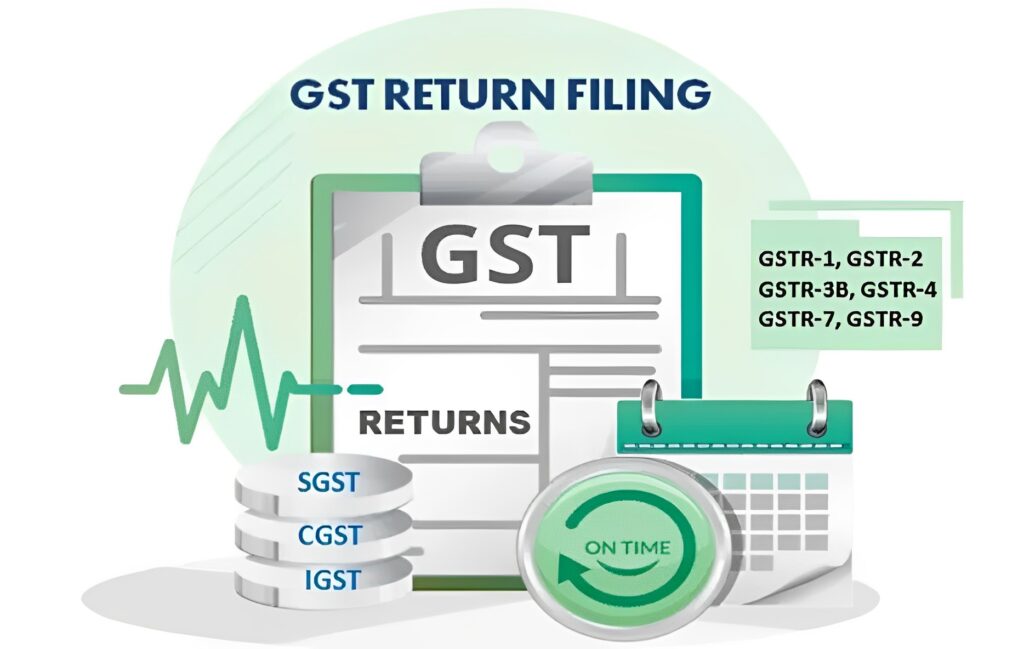Introduction
The Goods and Services Tax (GST) is a comprehensive indirect tax that has replaced multiple indirect taxes in India. GST is levied on the supply of goods and services and is collected by businesses on behalf of the government. GST returns filing is an essential aspect of the GST system, and it is mandatory for businesses to file GST returns accurately and on time. In this blog, we will provide you with the ultimate guide to GST returns filing and everything you need to know about it.
What are GST Returns?
GST Returns are the statements filed by businesses with the GST authorities, providing details about their sales, purchases, input tax credit, and tax liability for a specific period. GST returns serve as the basis for the government to assess the tax liability of the businesses. The GST returns filing frequency and type of return depend on the business’s turnover and registration under the GST system.
Types of GST Returns
There are various types of GST returns that businesses need to file depending on their turnover and registration type. The following are the types of GST returns:
- GSTR-1: GSTR-1 is a monthly or quarterly return filed by businesses to provide details of their outward supplies.
- GSTR-3B: GSTR-3B is a monthly return filed by businesses to provide a summary of their sales, purchases, and input tax credit.
- GSTR-4: GSTR-4 is a quarterly return filed by businesses registered under the Composition Scheme.
- GSTR-5: GSTR-5 is a monthly return filed by Non-Resident Taxpayers.
- GSTR-6: GSTR-6 is a monthly return filed by Input Service Distributors.
- GSTR-7: GSTR-7 is a monthly return filed by businesses required to deduct tax at source (TDS).
- GSTR-8: GSTR-8 is a monthly return filed by businesses required to collect tax at source (TCS).
- GSTR-9: GSTR-9 is an annual return filed by businesses to provide a summary of their sales, purchases, input tax credit, and tax liability for the financial year.
GST Returns Filing Process
To file GST returns, you need to follow the following process:
- Step 1: Login to the GST portal (https://www.gst.gov.in/) using the GSTIN and password.
- Step 2: Select the type of return to be filed and the relevant financial year and month/quarter.
- Step 3: Fill in the details of the sales, purchases, input tax credit, and tax liability for the selected period.
- Step 4: Verify the details and submit the return.
- Step 5: Make the payment of the tax liability, if any, through the GST portal.
Due Dates for Filing GST Returns:
Each type of GST return has a different due date for filing. The due date for filing GST returns is as follows:
- GSTR-1: 11th of the next month (monthly filers) or 13th of the next month (quarterly filers).
- GSTR-3B: 20th of the next month.
- GSTR-4: 18th of the month following the end of the quarter.
- GSTR-5: 20th of the next month.
- GSTR-6: 13th of the next month.
- GSTR-7: 10th of the next month.
- GSTR-8: 10th of the next month.
- GSTR-9: 31st December of the subsequent financial year.
Consequences of Non-Compliance
Non-compliance with GST regulations can result in penalties, interest, and legal action. The consequences of non-compliance are as follows:
- Late Fees: Rs. 50 per day for each return that is not filed, up to a maximum of Rs. 5,000 per return.
- Interest: 18% per annum on the outstanding tax liability from the due date till the date of payment.
- Penalty: Rs. 10,000 or 10% of the tax due, whichever is higher, for each return that is not filed.
- Prosecution: Fine and imprisonment for up to three years.
- Loss of Input Tax Credit: Inability to claim input tax credit on purchases.
Conclusion
Filing GST returns accurately and on time is critical for businesses to avoid penalties and legal action. The GST returns filing frequency and type of return depend on the business’s turnover and registration under the GST system. The process of filing GST returns involves logging in to the GST portal, selecting the type of return, filling in the details, verifying and submitting the return, and making the payment of tax liability, if any. Non-compliance with GST regulations can result in penalties, interest, and legal action, and it is essential for businesses to ensure GST compliance to avoid these consequences.
